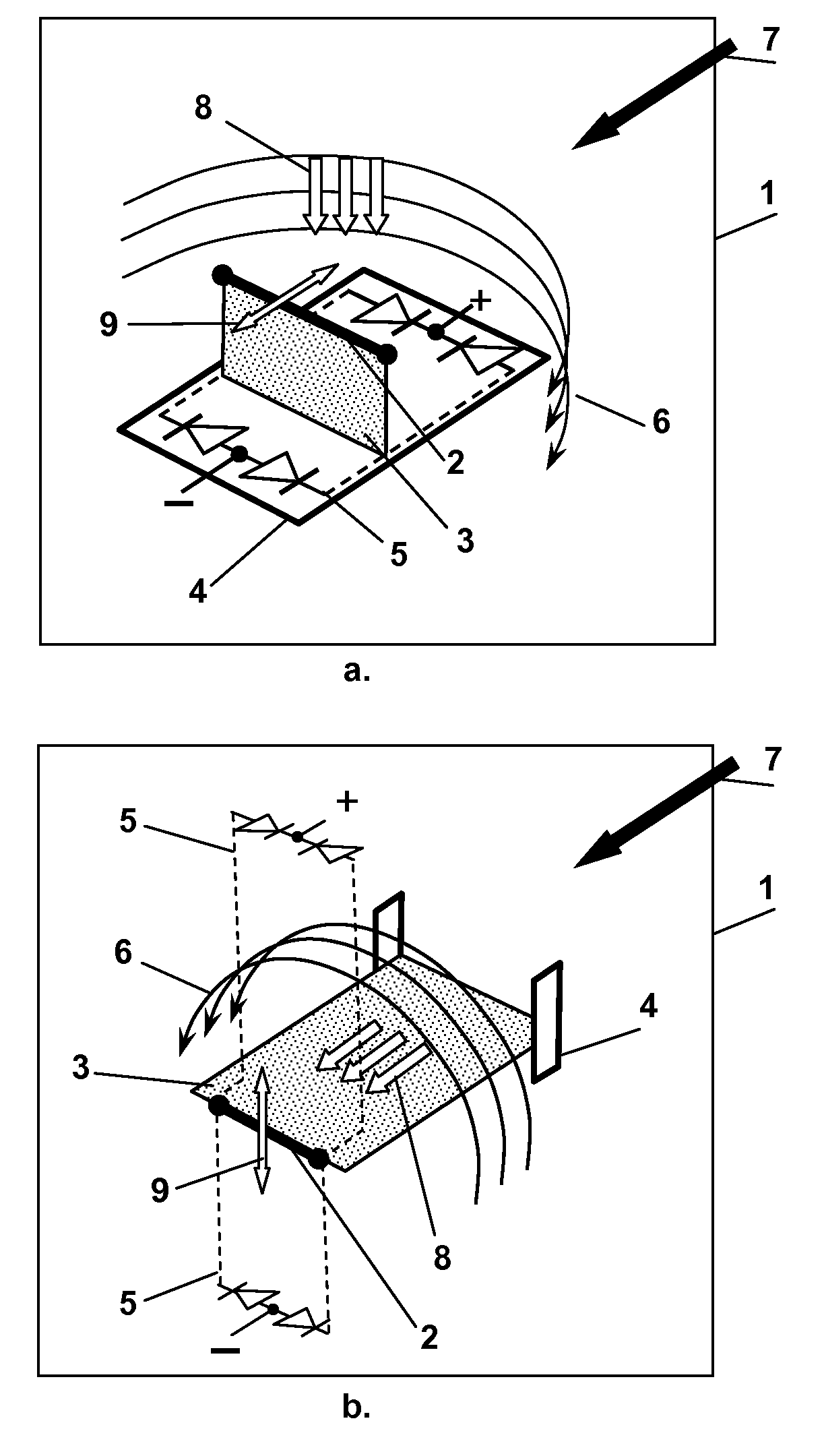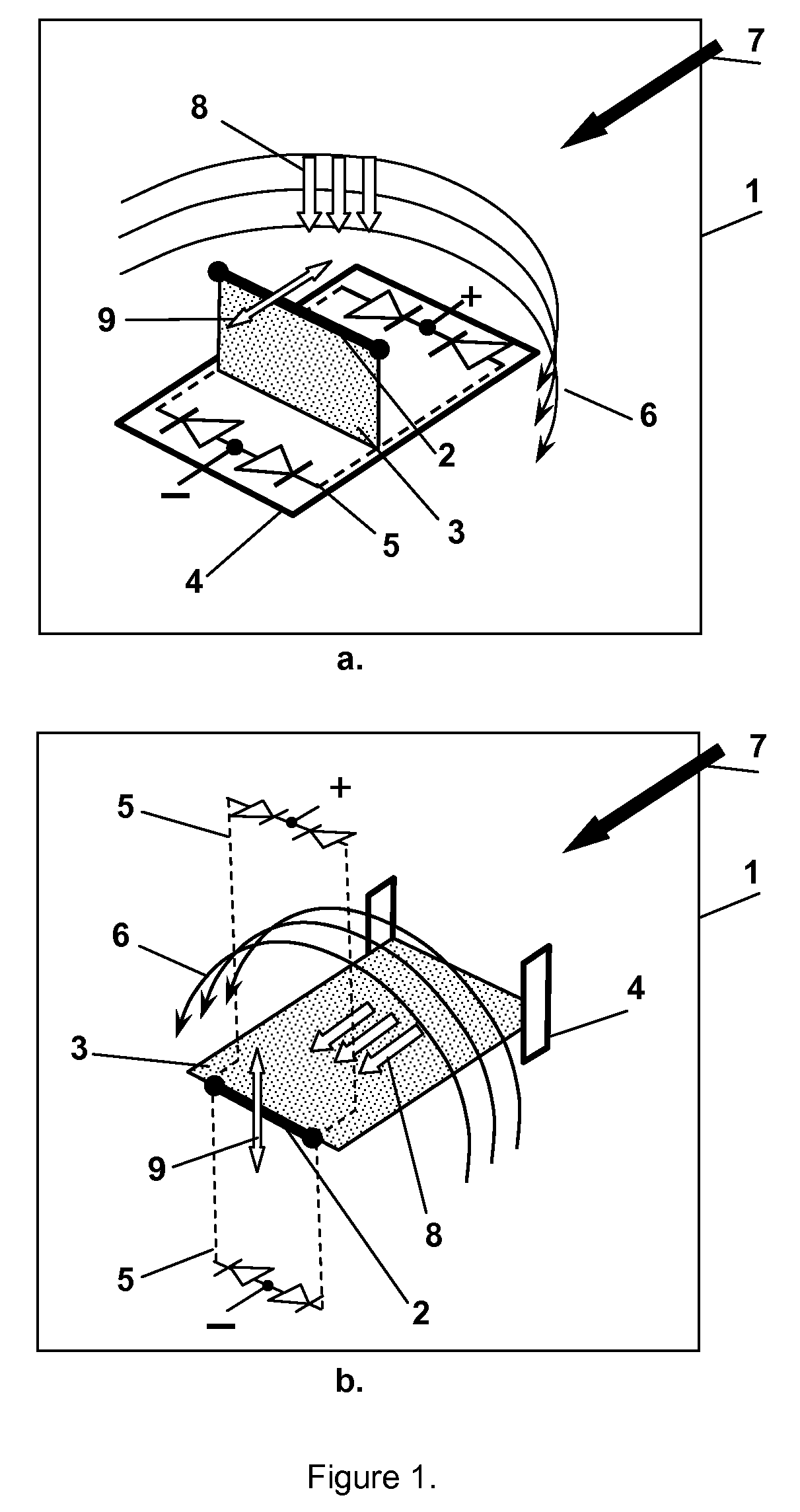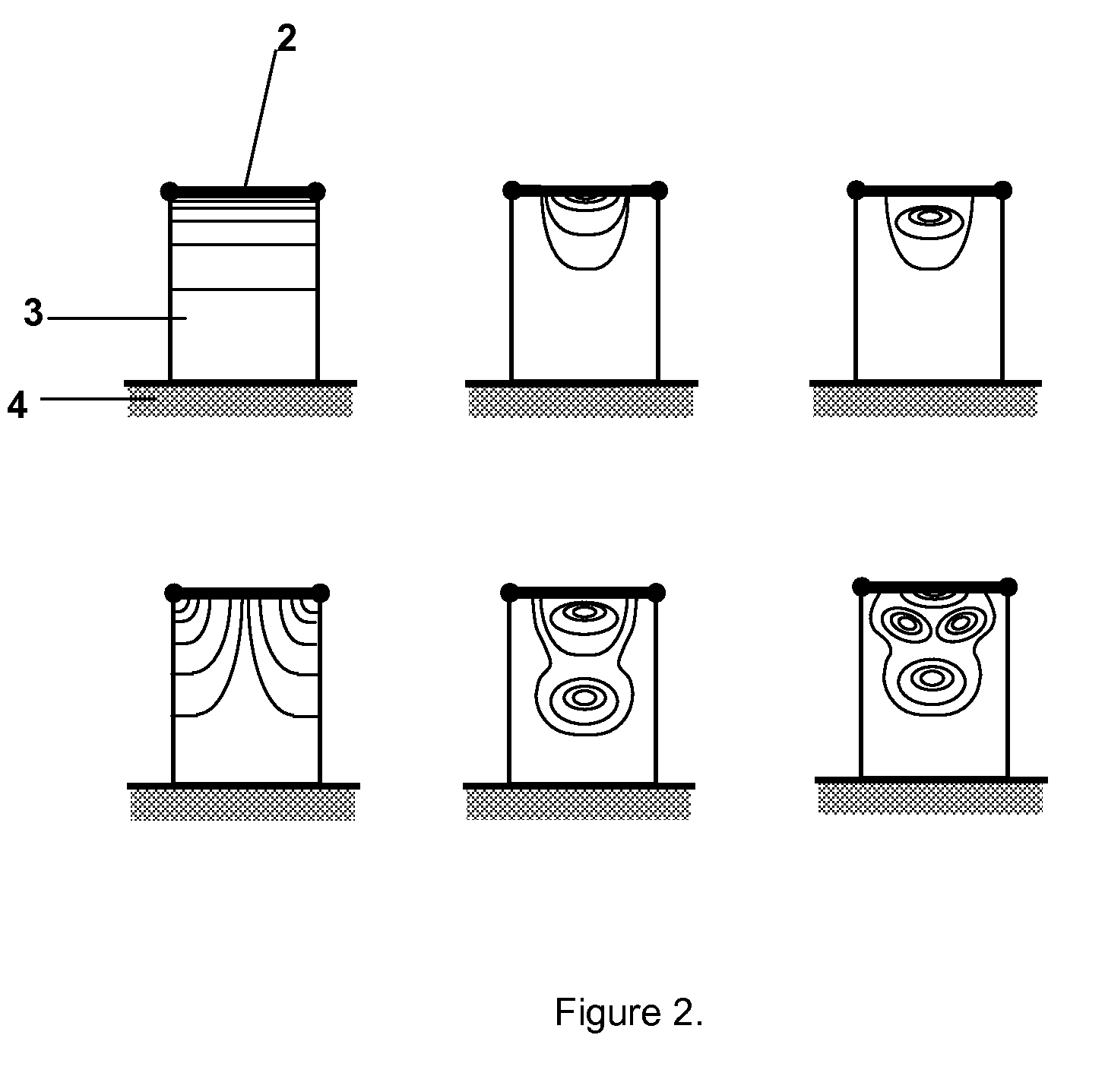Apparatus for harvesting energy from flow-induced oscillations and method for the same
a technology of flow-induced oscillation and apparatus, applied in the direction of electric generator control, machines/engines, sustainable buildings, etc., can solve the problems of low cost-effectiveness at regimes with a lower power output, limited efficiency at wide range of flow velocity, and inability to efficiently adjust to flow velocity changes
- Summary
- Abstract
- Description
- Claims
- Application Information
AI Technical Summary
Benefits of technology
Problems solved by technology
Method used
Image
Examples
Embodiment Construction
[0037]An electrical generator includes at least one electrical conductive element and at least one magnetic field source in the presence of the external flow. The conductive element is monolithically integrated with an elastic element and configured to move with the elastic element. The elastic element is attached to the base at least at one point. When the flow does not impinge on the elastic element, the elastic element and the conductive element are maintained in a neutral position at the base. The flow impinges on the elastic element causing a displacement of the elastic element with integrated conductive element, producing electricity in the proximity of the magnetic field.
[0038]The preferred embodiment of the generator is described below, but it should be clearly understood that the principles of the invention are not limited to any particular embodiment of generator described herein. It will be apparent to one skilled in the art that the present disclosure may be practiced wi...
PUM
 Login to View More
Login to View More Abstract
Description
Claims
Application Information
 Login to View More
Login to View More - R&D
- Intellectual Property
- Life Sciences
- Materials
- Tech Scout
- Unparalleled Data Quality
- Higher Quality Content
- 60% Fewer Hallucinations
Browse by: Latest US Patents, China's latest patents, Technical Efficacy Thesaurus, Application Domain, Technology Topic, Popular Technical Reports.
© 2025 PatSnap. All rights reserved.Legal|Privacy policy|Modern Slavery Act Transparency Statement|Sitemap|About US| Contact US: help@patsnap.com



